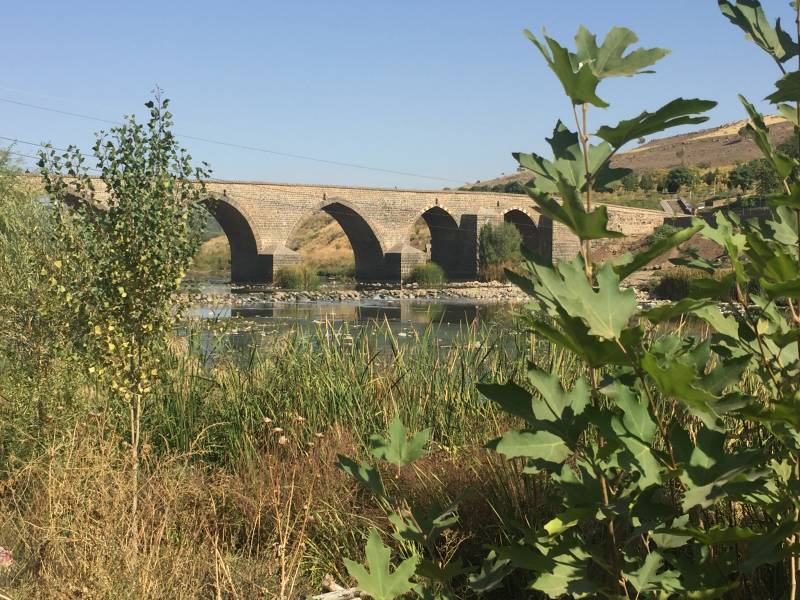After winning most of the municipalities in Turkey’s mainly Kurdish southeast in the 2009 local elections, pro-Kurdish party Democratic Society Party (DTP) instigated what it called a “multi-linguistic and multicultural governance” concept in Kurdish cities.
Surp Gıragos Armenian Church, the biggest Armenian Church in the Middle East, was opened in 2011 after significant renovation funded by the Diyarbakır municipality and the Armenian community. Hundreds of Armenians from the United States, Europe and elsewhere came for the opening. It was a big event. The mayor of Diyarbakır, Osman Baydemir, told Armenians at the ceremony:
“I am not your host today. Here is your home. Welcome home. Thank God that after a century we are together again. Thank God that the sounds of the azan (Muslim call to prayer) and church bells are together again. After you left, we became poor, we lost peace. We will never leave you again; we will never leave our brothers and sisters again,” he said.
The opening of the Armenian church was followed by other multicultural initiatives. In 2012, the media proudly broadcast news about the opening of Armenian language courses in Diyarbakır. With the support of the Sur municipality, the courses continued for several years with high interest from the local Kurdish and Armenian communities. After a few years, local people were greeted with street signs in Armenian. Not only in my hometown Diyarbakır, but in many other districts like Edremit, Derik and Van, it became common to see Armenian signs and cultural events.
The mayor of Edremit Sevil Rojbin Çetin said: “We will not allow the destruction of Armenian history and culture that the state wanted to wiped out. We made these efforts out of the necessity of respecting the memory of the Armenian people.”
These events were followed by other developments connected with Assyrians and other minority groups in the Kurdish region. Many Assyrian families returned to their villages from Europe after many years. Kurdish municipalities supported them in their efforts to rebuild their lives in their villages. Between 2012 and 2015, media headlines often covered the return of Assyrians. In every flight to the region, you would see a few Assyrian families. Assyrian wine became popular all over the region and it became common to see cultural goods of the minority communities in the bazaars.
In July 2015, after the collapse of the peace process between the state and the Kurdistan Workers’ Party (PKK), clashes erupted in Kurdish cities. The state declared military curfews in Kurdish cities. The Surp Giragos Armenian Church, some other churches and many historical places significant to Kurds, Armenians, Assyrians and Chaldeans were destroyed and looted during the curfews.
After the declaration of the state of emergency in July of 2016, Kurdish mayors were imprisoned and state administrators were appointed to replace the elected Kurdish mayors. The administrators initially removed the Armenian signs from the entrances to Kurdish municipalities and replaced these signs with Turkish flags.
Months later, Armenian street signs were removed in cities like Edremit, Van and Ahdamar where Armenians have lived for hundreds of years. It was the same in my hometown Diyarbakır. The administrators removed Armenian and Assyrian signs and replaced them with Turkish flags. Court cases were opened against the former Sur mayor Abdullah Demirbaş because of using Armenian and Assyrian street signs.
Then paramilitaries began seizing Assyrian and Chaldean lands.. Some of the people who struggled to keep their lands were imprisoned. They were threatened not only by the paramilitary groups but also by soldiers who started forest fires during the military operations against the PKK. The Armenians, Assyrians and Chaldeans who had returned to their villages, lands and homes left again.
All Kurdish and Armenian language courses were closed. Multi-lingual child crèches opened by Kurdish municipalities were closed. Kurdish media were closed. Kurdish-Armenian-Assyrian billboards, signs, street names and monuments were removed. All cultural centres were closed. Everything linked to multi-lingualism and multiculturalism was prohibited.
Everything returned to one culture, one language, one nation, and one flag. In the last two years, with the state’s appointment of administrators to our municipalities, we have lost everything again. We have lost multiculturalism. We have lost Armenians, Chaldeans and Assyrians. We have lost our brothers and our sisters again.
We are poor again.
